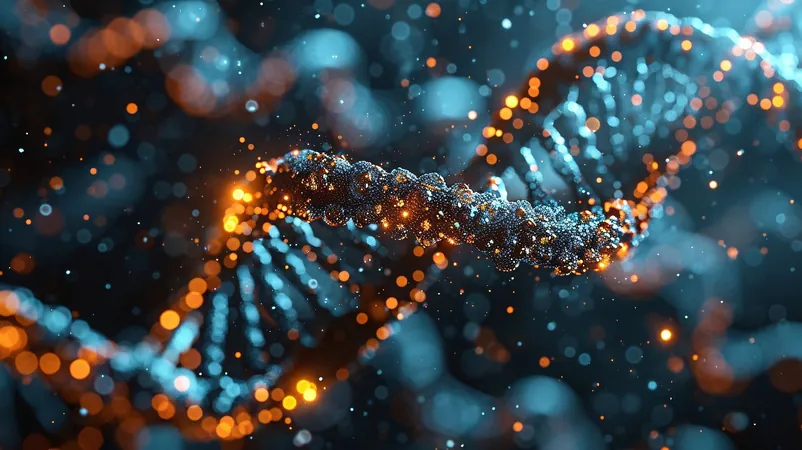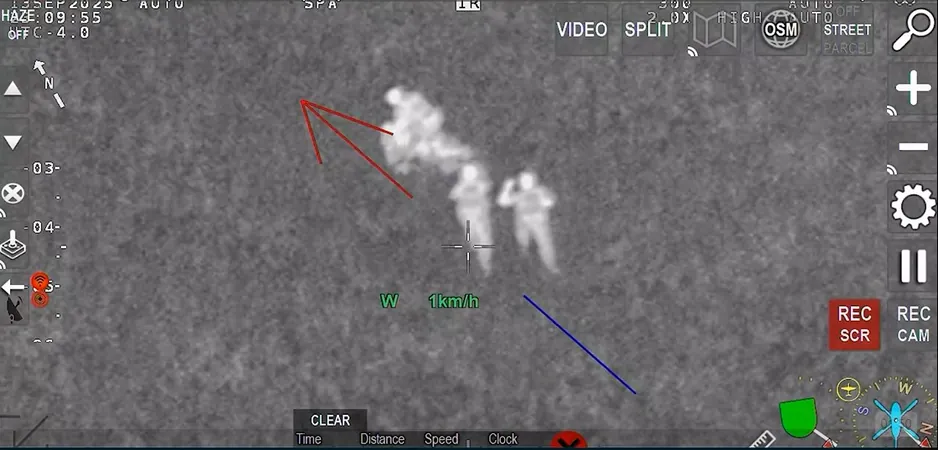
Unlocking Performance: How a Full Hard Drive Could Supercharge Your Computer
2025-07-05
Author: Emma
Revolutionizing Computing: The Unexpected Benefits of a Full Hard Drive
In the world of technology, a surprising phenomenon has emerged that turns our assumptions upside down. Traditionally, it was believed that a full hard drive would slow down your computer, creating bottlenecks in performance. However, experts have revealed that a filled hard drive can actually enhance computing capabilities, leading us into the groundbreaking realm of catalytic computing.
What is Catalytic Computing?
Catalytic computing, a term stemming from computational complexity theory, challenges long-held beliefs about resource constraints in computing. This branch of computer science dives deep into the time and memory needed to tackle various computational challenges, categorizing them based on the efficiency of algorithms.
The most recognized category, ‘P,’ consists of problems solvable by efficient algorithms. In contrast, the ‘L’ category requires algorithms to use minimal memory. The tantalizing question remains: can every problem in ‘P’ be resolved with limited memory? Catalytic computing has opened new avenues to explore this question.
Unlike traditional expectations, catalytic computing suggests that a full hard drive can act almost like a catalyst in a chemical reaction, facilitating computing processes without consuming resources. By harnessing this unique approach, researchers are employing innovative methods to execute complex tasks despite memory limitations.
The Tree Evaluation Problem: A Case Study
One compelling example of catalytic computing in action is the tree evaluation problem, conceptualized by complexity theorists Stephen Cook and Pierre McKenzie. This problem involves hierarchical calculations that aggregate multiple inputs into a singular output, reminiscent of a tournament structure.
Initially, the premise was that solving this problem with limited memory was an impossibility, as it seemed any algorithm would require more memory than the ‘L’ category allows. However, catalytic computing techniques have proven this wrong, showcasing how full memory can be creatively manipulated to perform these calculations.
A Breakthrough in Computational Power
The journey to uncover the truth behind catalytic computing began with Michal Koucký, who initially argued against computations using full memory. His partnership with Harry Buhrman and Richard Cleve led to an astonishing discovery: when applied correctly, full memory can enhance computational capabilities.
This revelation sparked intrigue in the scientific community, as researchers learned that minor, reversible changes to a full hard drive can amplify its computational prowess. This challenges what was once considered the limit of memory usage and opens the door for more optimized computing processes.
Future Horizons in Computational Complexity
The breakthroughs in catalytic computing have revitalized interest in computational complexity research. Scholars are exploring links between this technique and other significant areas, such as randomness and error tolerance, in hopes of uncovering additional applications.
Innovators like James Cook and Ian Mertz further exemplify this resurgence, having adapted catalytic computing techniques to solve the tree evaluation problem with minimal resource use. Their success not only resolved a lingering contention in the field but also provided insights into the historically debated P versus L dilemma.
As research into catalytic computing progresses, the landscape of computer science continues to evolve dramatically. With every new achievement, the depth of our understanding of computational complexity expands, leading to exciting prospects for the future of computing.
The journey of catalytic computing is just beginning, and one can only speculate on the hidden potentials that full memory holds, waiting to be unveiled by the next wave of technological pioneers.









 Brasil (PT)
Brasil (PT)
 Canada (EN)
Canada (EN)
 Chile (ES)
Chile (ES)
 Česko (CS)
Česko (CS)
 대한민국 (KO)
대한민국 (KO)
 España (ES)
España (ES)
 France (FR)
France (FR)
 Hong Kong (EN)
Hong Kong (EN)
 Italia (IT)
Italia (IT)
 日本 (JA)
日本 (JA)
 Magyarország (HU)
Magyarország (HU)
 Norge (NO)
Norge (NO)
 Polska (PL)
Polska (PL)
 Schweiz (DE)
Schweiz (DE)
 Singapore (EN)
Singapore (EN)
 Sverige (SV)
Sverige (SV)
 Suomi (FI)
Suomi (FI)
 Türkiye (TR)
Türkiye (TR)
 الإمارات العربية المتحدة (AR)
الإمارات العربية المتحدة (AR)